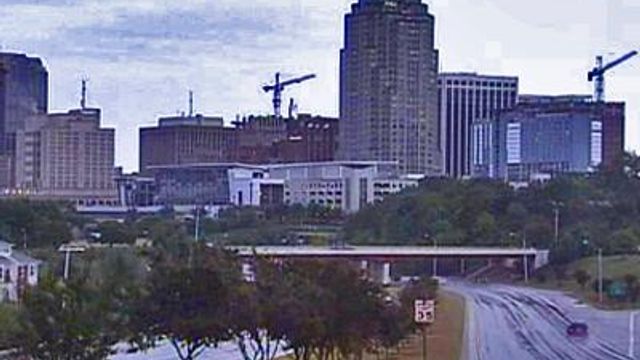Developer: Skyline's Not The Limit For Downtown Raleigh
As downtown grows taller, Raleigh's biggest downtown advocate also wants it to grow more livable and lively.
Posted — UpdatedDavid Diaz, director of the Downtown Raleigh Alliance for three months, said the downtown area is enjoying a boom as companies, including RBC Centura, are bringing in thousands of jobs. But Diaz, who's been on the job for three months, said downtown Raleigh has a long way to go to be able to entertain the tourists drawn by the new convention center.
More importantly, he said he wants the new residents -- who are expected to double downtown's population in the next three years -- to feel as if they live in a lively, energetic city.
"You've got to make sure we just don't develop an office district in downtown," like Charlotte has, Diaz said.
"It's got to be more dynamic than that ... where you have shops, restaurants, performance facilities, open really day and night."
Diaz said he's learned lessons from other downtown revitalization efforts. He said transportation and connectivity are keys to a cohesive downtown.
Raleigh's downtown is split into five distinct areas: Glenwood South, the Capital district, Fayetteville Street, Moore Square and the Warehouse District. Diaz said more than existing streets and sidewalks is needed to connect those districts.
"Right now, it's hard to get to those areas by walking, so we are really interested in linking those areas, perhaps with a downtown trolley," he said. He pointed to the success of that type of transportation in cities, including downtown Portland, Oregon.
"They've been able to connect the different neighborhoods within the downtown very nicely, by using trains, shuttles, buses," he said.
Diaz also said downtown Raleigh could take lessons in providing commercial opportunities from downtown Seattle, known for great shopping.
"They've got great local, independent retailers by the dozens in their downtown," he said. Seattle accomplished that by putting stores on the level beneath offices, so people walk by and stop in the stores.
Diaz said he believes downtown Raleigh will be transformed within five to 10 years. He envisions it as a regional center, connected internally with an expanded trolley system and outward with a light rail system to the suburbs.
"We are really going to see a different downtown," he said.
• Credits
Copyright 2024 by Capitol Broadcasting Company. All rights reserved. This material may not be published, broadcast, rewritten or redistributed.





